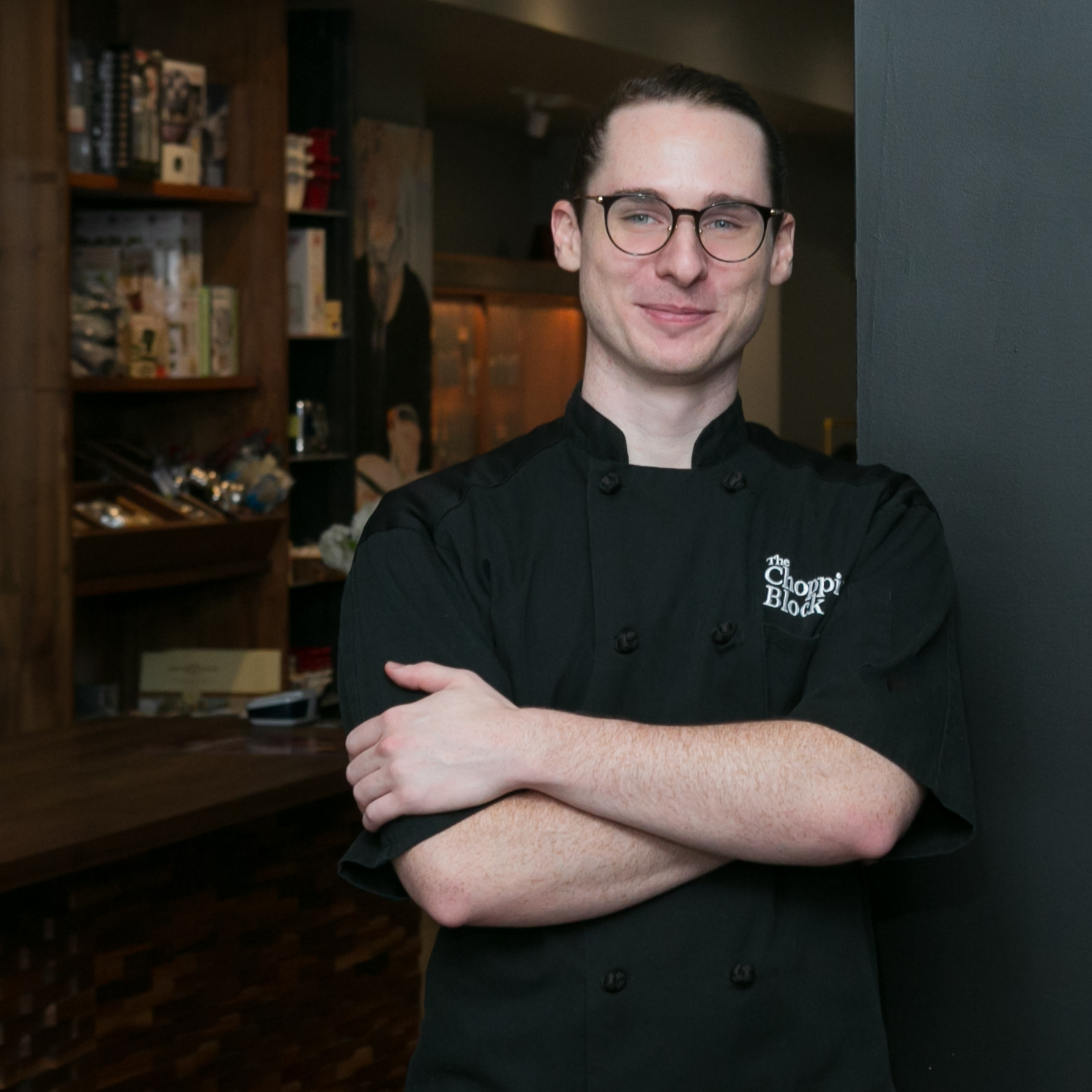Do you love French cuisine, but feel intimidated by the complex recipes and fancy terms? Do you want to learn how to cook like a pro, using simple and easy methods that will transform your dishes?
I will introduce you to some of the basic French cooking techniques that are essential for any home cook. I’ll also share some interesting history that relates to these techniques, and how they have influenced the culinary world. And finally, I’ll share some of my favorite French restaurants in Chicago where you can enjoy authentic and delicious French food.
So, are you ready to embark on this culinary adventure with me? Let’s get started!
The first thing you need to know about French cooking is the concept of mise en place. This means “everything in its place”, and it refers to the organizational preparation and set-up of your kitchen before you start cooking. You should have all your ingredients measured, chopped, and ready to go, as well as all the tools and equipment you need within easy reach. This will save you time and stress, and allow you to focus on the cooking process.
Mise en place is not only a practical technique, but also a philosophical one. It reflects the French attitude towards cooking: meticulous, disciplined, and respectful of the ingredients. The term was coined by Georges Auguste Escoffier, the legendary French chef who revolutionized the culinary world in the late 19th and early 20th centuries. He created the modern kitchen brigade system, standardized recipes, and codified the principles of French cuisine.
One of the skills you need to master for mise en place is knife work. There are different types of knife cuts that are used in French cuisine, such as julienne (thin strips), brunoise (small dice), chiffonade (thin ribbons), and concassé (rough chop). Don't worry about getting caught up in the names, if you want to sharpen your cuts, join us in one of our Knife Skills classes, and we'll help you perfect the cuts. These cuts not only affect the appearance and texture of your food, but also the cooking time and flavor release. For example, a finely diced onion will cook faster and release more flavor than a coarsely chopped one. You should practice your knife skills regularly and use a sharp knife to achieve precise and consistent cuts.
Knife work is also an art form in French cuisine. It reflects the creativity and elegance of the chef, as well as the respect for the ingredients. One such example of this elegance is with the knife cut called tourne (to turn), which refers to a technique of cutting vegetables into uniform shapes, such as barrels or footballs. This technique was developed by Antonin Carême, another influential French chef who was known as the “king of chefs and the chef of kings”. He was famous for his elaborate and extravagant dishes, such as pièces montées (edible sculptures made of sugar or pastry).
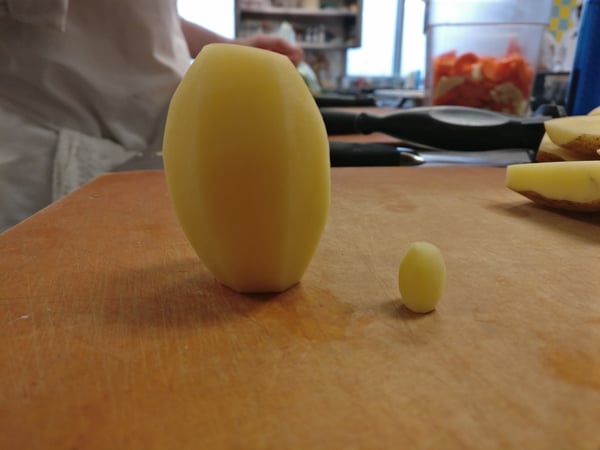 Tourne Potatoes
Tourne Potatoes
Once you have your mise en place ready, you can move on to the actual cooking techniques. There are many methods of cooking in French cuisine, but I’ll focus on some of the most common ones:
- Sautéing: This is a quick and easy way to cook food over high heat in a small amount of fat,
such as oil or butter. The food should be cut into small pieces or thin slices, and stirred or
tossed frequently to prevent burning. Sautéing is great for vegetables, meats, poultry, fish, and
seafood. It creates a nice browning effect and enhances the flavor of the food.
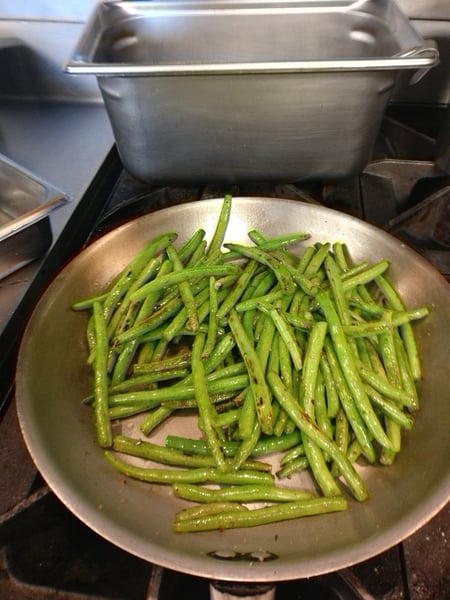 Sautéed green beans
Sautéed green beans
- Flambéing: This is a dramatic technique that involves adding alcohol to a hot pan and igniting
it to create a flame. The alcohol burns off quickly, leaving behind a rich and complex flavor.
Flambéing is often used for desserts, such as Crêpes Suzette or Bananas Foster, but it can also
be used for savory dishes, such as Steak Diane or Coq au Vin. - Poaching: This is a gentle way to cook food by simmering it in a liquid, such as water, stock,
milk, or wine. The liquid should be kept at a low temperature, just below boiling point, to avoid
toughening or drying out the food. Poaching is ideal for delicate foods, such as eggs, fish,
chicken, and fruit. It preserves the natural flavor and moisture of the food.
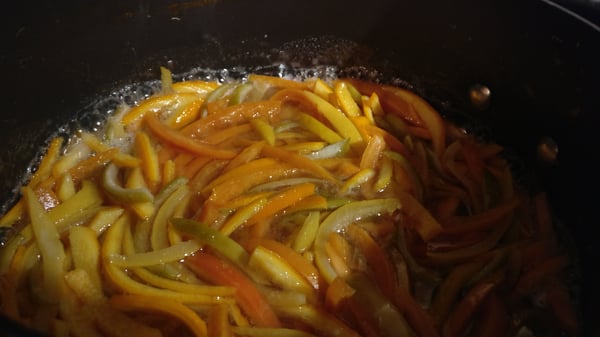 Poached citrus peel
Poached citrus peel
- Broiling and grilling: These are similar techniques that involve cooking food over or under
direct heat. The food should be brushed with oil or marinade to prevent sticking and drying out.
Broiling and grilling are suitable for meats, poultry, fish, seafood, vegetables, and cheese. They
create a charred and smoky flavor and texture. - Braising: This is a slow-cooking method that involves searing food in a pot over high heat, then
adding liquid and aromatics, covering the pot with a lid, and simmering it over low heat until
tender. Braising is perfect for tough cuts of meat, such as beef chuck or lamb shank. It
transforms them into succulent and flavorful dishes.
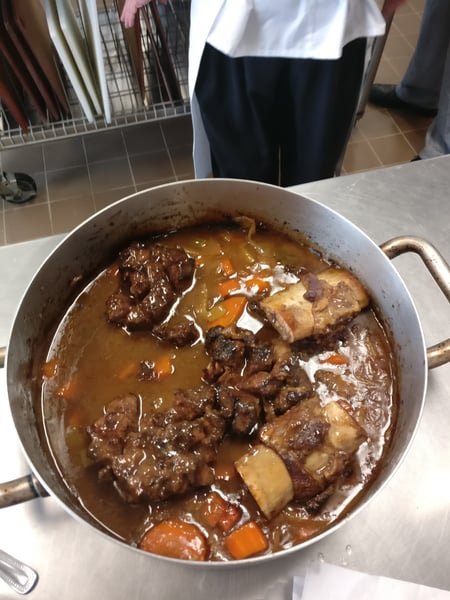 Braised Short Ribs
Braised Short Ribs
- Baking: This is a dry-heat method that involves cooking food in an oven. Baking is mostly used
for breads, pastries, cakes, pies, quiches, casseroles, gratins, and soufflés. Baking creates a
golden crust and a soft interior.
These are just some of the basic French cooking techniques that you can use to create amazing dishes at home. Of course, there are many more techniques that you can learn and explore, such as roasting, frying, steaming, blanching, stewing, confit-ing... the list goes on!
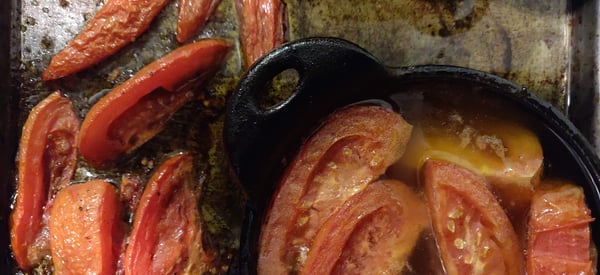 Confit tomatoes
Confit tomatoes
But if you want to take a break from cooking and enjoy some authentic French cuisine prepared by expert chefs, I recommend visiting Mon Ami Gabi or Obelix in Chicago. These elegant restaurants offers modern French and Continental cuisine with fresh and organic ingredients. It's always beneficial to find the baseline for what food should taste like before attempting a dish yourself.
If you want to test out your skills join The Chopping Block on July 14 at 6pm CST for Virtual French Bistro where most of these topics will be covered in detail with delicious food including:
- Salade Lyonnaise (Mixed Green Salad with Bacon Vinaigrette and Poached Egg)
- Steak au Poivre (Pepper-Crusted) with Maître d'hôtel Butter
We also have a new grilling class this season which brings French cooking to open flame outdoors. Join us for Hands-On Parisian Grilling on the Patio on either Friday, July 14 at 6pm or Saturday, July 29 at 6pm featuring:
- Grilled Tuna Niçoise Salad with Grilled Green Beans and Potatoes, Tomatoes and Hard-Boiled Eggs
- Brined and Grilled Mustard-Tarragon Chicken Thighs with Herbs de Provence Butter
- Grilled Ratatouille
- Wood-Fired Seasonal Fruit Clafoutis


